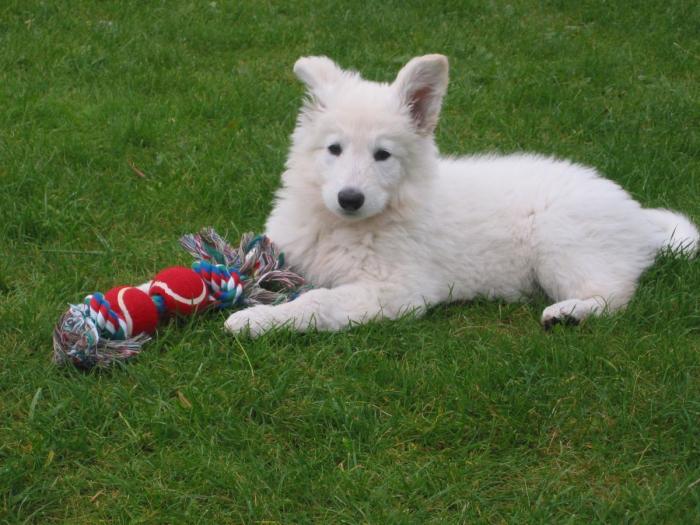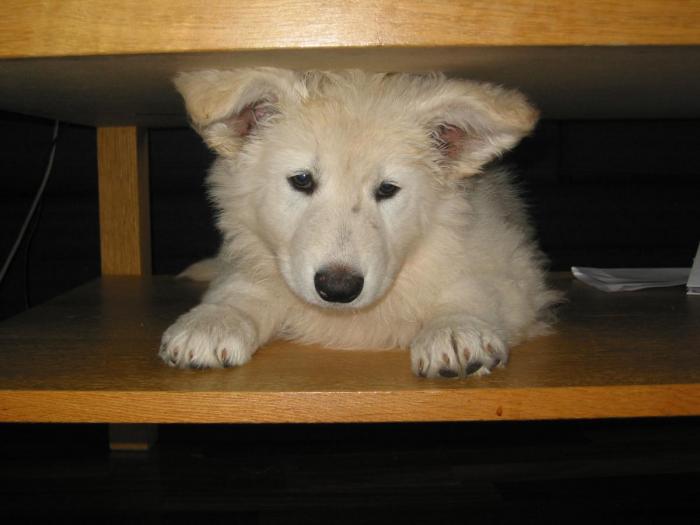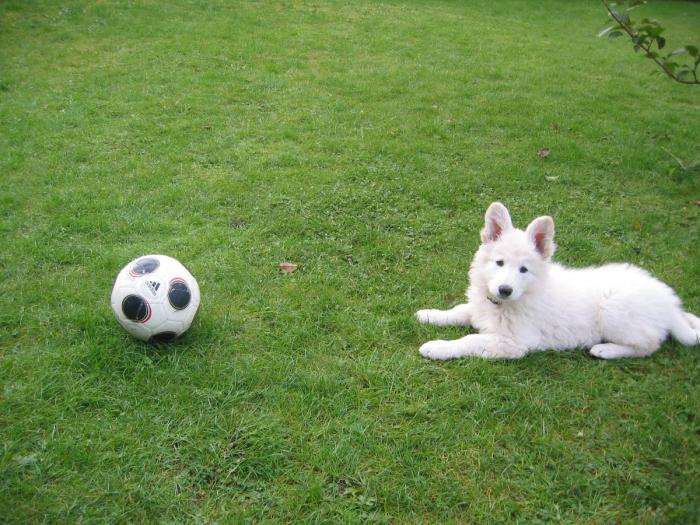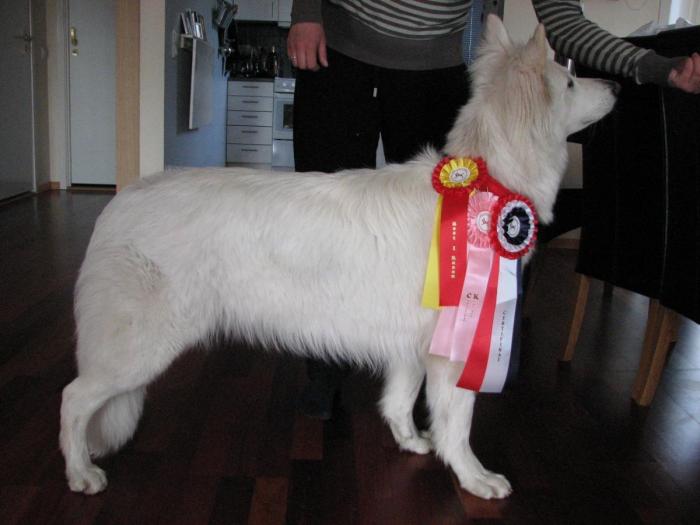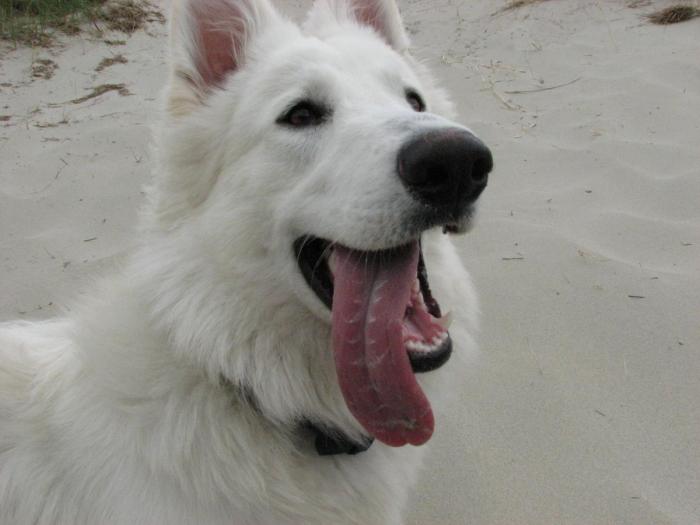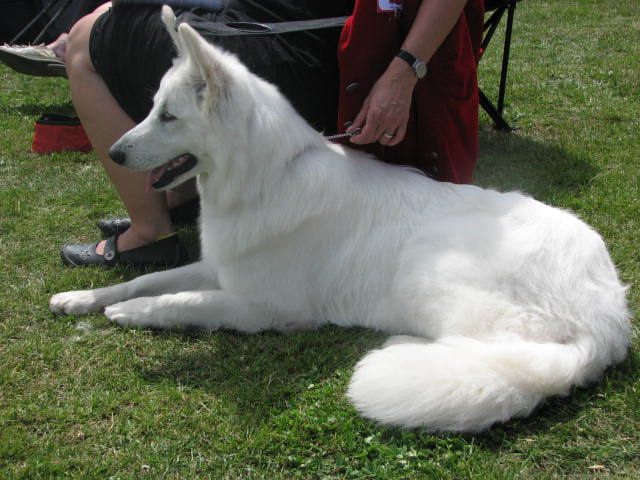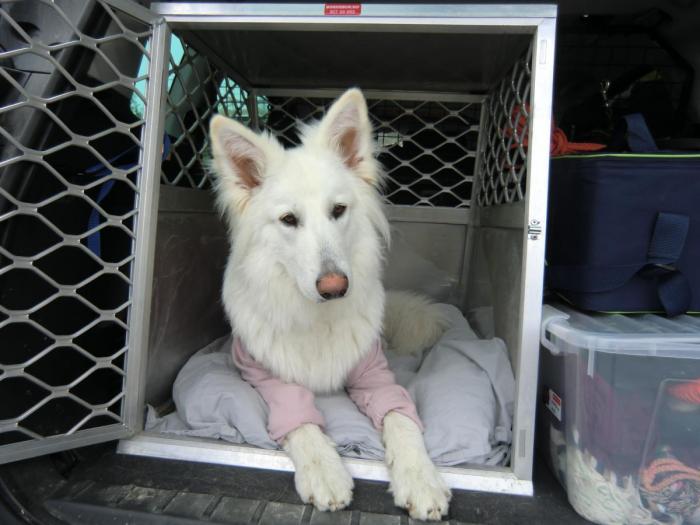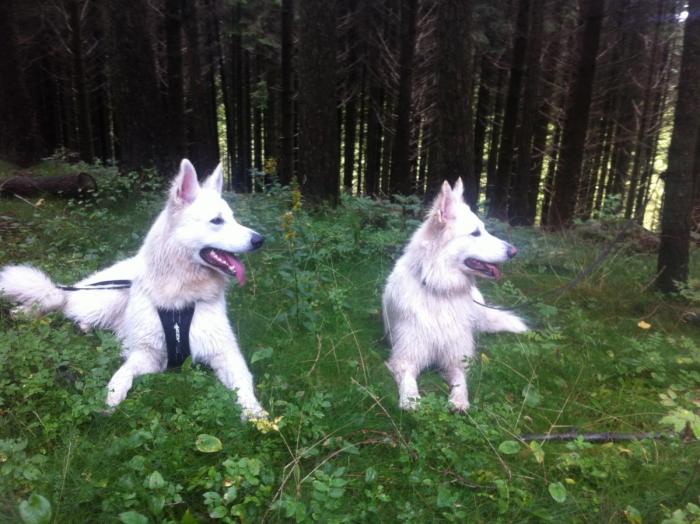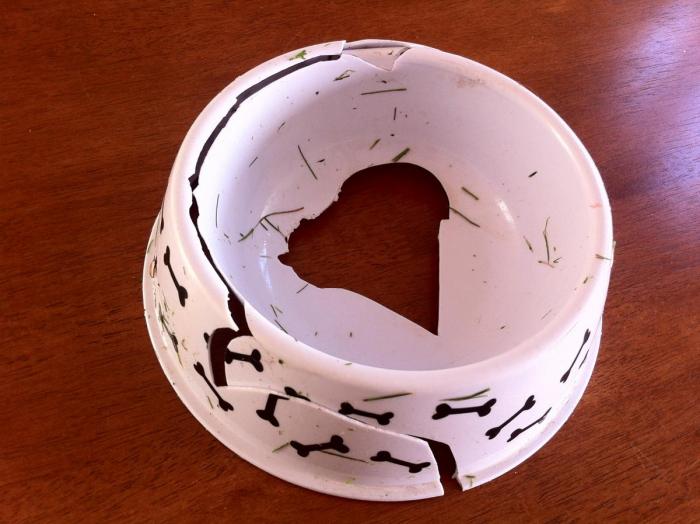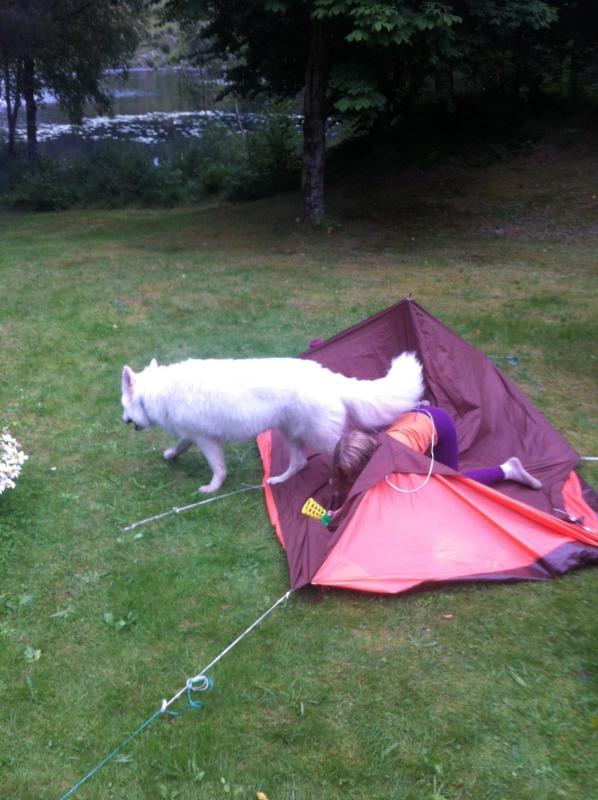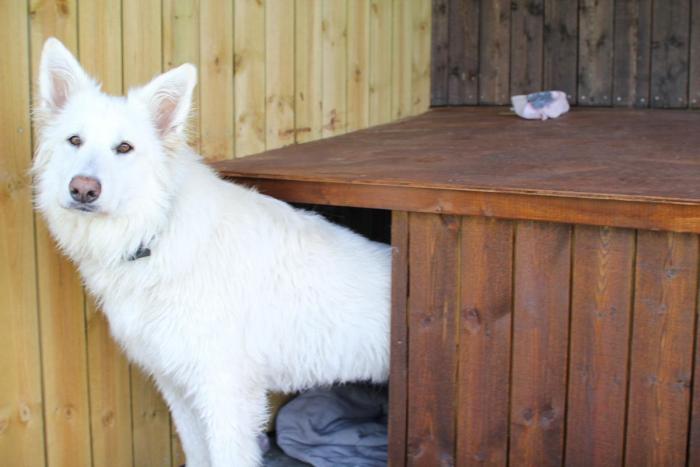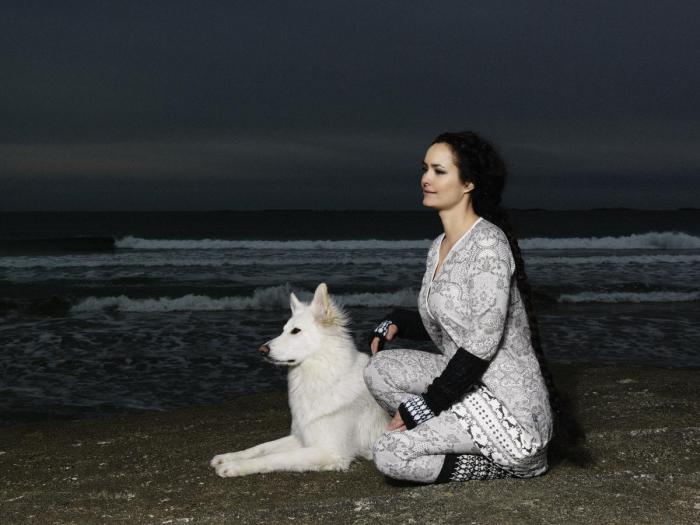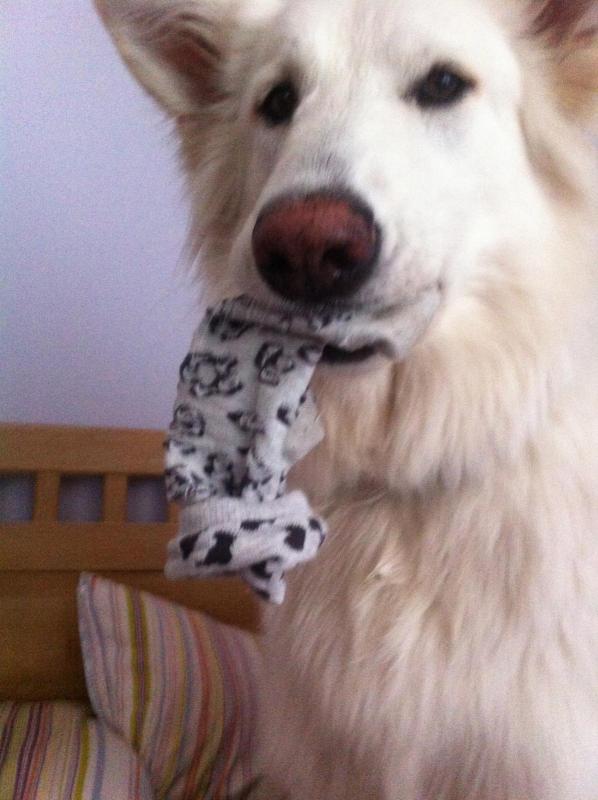-
Innholdsteller
874 -
Ble med
-
Besøkte siden sist
Innholdstype
Profiler
Forum
Blogger
Articles
Alt skrevet av HeraHiromi
-
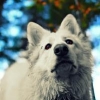
Fransk beinstilling, mulig at det endres?
HeraHiromi replied to Jankaa's emne in Hundens helse og sykdommer
Min hund er ganske så fransk. hehe, det er selvfølgelig noe oppdretterne er obs på da det er en del HG som er franske. Kan ikke huske at dpommere på utstilling har brydd seg med det. Hun fungerer bra fysisk på alle måter. Gode sterke ben, og min er mye franskere enn din. skal se om jeg kan få tatt bilde en dag. -
Da er mail sent til Storesand Trodde aldri vi skulle stille ut mer, men dette blir spennende
-
Skal sjekke ut Storsand Camping
-
Noen som har tips om en OK plass å overnatte med hund når man skal på denne utstillingen?
-
Hvilken str har du?De er store i størrelsen slik som vestene?
-
Forer på V&H, men savner et litt "kjedeligere" for, siden jeg bruker mat i belønnings sammenheng i treningen. Har hørt at Orijen skal være bra til tørrfor å være.
-
Vi skal teste ut dette her. Hadde jo vært deilig å komme skikkelig i gang med meldingen også, den har virket helt uoppnåelig av og til Takk for gode tips. skal oppdatere hvordan det går
-
Takk for flott svar Du mener at jeg setter meldingen på nå, bare at jeg da har synlige figuranter nærme? Vi har trent litt melding separat, og det går greit så lenge hun er trygg på figg.
-
Vi lærte inn runderingen med flying, men så ble hun så stressa ute hos figurant at hun freste avgårde til neste figurant før hun skulle, gikk da over til at jeg gikk ut og hentet henne hos figg og sendte henne ut på neste slag (vi har ikke melding enda) Men kanskje jeg kan ha figurantene helt synlige på de første slagene, for så og sjekke ut om hun løper rett ut på neste? Må tenke litt på om vi skal kjøre flying igjen... har akkurat fått henne til å begynne å roe seg litt ute hos figurant Hun har liksom ikke helt sett verdien i å være der ute, for henne er selve søket sterkere enn mennesket der ute. Har hatt enorme problemer med å stoppe henne når hun er på vei i et søk, da er hun i en helt annen verden. Har jobbet en del med en "runderingsinnkalling" når vi er på tur i skogen og det kommer seg Hun er jo også usikker på nye folk, så jeg lurer på om det også kan påvirke at hun løper skeivt. hun må liksom sjekke ut luktene før hun går inn til figg.
-
Når jeg sender hera ut, har hun en tendens til å skråne til høyre uansett. Vil jo hun skal løpe rett ut. Vil helst unngå påvirkning da jeg har sett hvor avhengig mange hunder blir av fks lydpåvirknig. Jeg har av og til latt henne se at figurant går ut, tatt henne bort et par minutter for så å sende ut. da løper hun rett ut. men hvor mange ganger kan man gjøre dette? Livredd for å få en hund som er avhengig av påvirkning.
-
Lenge siden det ble oppdatert her gitt Hera er jo nå over tre år og "voksen" Resultat etter første utstilling 9 mnd og en dag gammel Heras søster Hallie På tur til NKK kr.sand 2010 På trening med sin gode venn Click Ting som knaser i munnen er gøy! Mye som er gøy Heey! Hera som modell for klesmerket Lilleba Strømper er en favoritt
-
Takker for svar!
-
Flotte høstbilder av flotte hunder!
-
Må hunden komme inn i utgangs stilling med bittet, eller kan hunden komme i front, for så å bli satt i utgangsstilling før den blir sendt ut på "vise" Tenker i forhold til konkurranse. Hvor streng er en dommer på disse tingene?
-
For en herlig hund!
-
Var et veldig kjekt og lærerikt kurs
- 1 reply
-
- 1
-

-
Vi trener rundering og LP. Trener for tiden i retrieverklubben, Hunden min har hatt en dårlig periode i runderingen, så nå har jeg gitt det frem til jul og får hun "tilbakefall" med tullet sitt så slutter vi og går over på spor. Om det går bra med runderingen så kommer vi til å trene mer mot konkurranse og da vurderer vi å trene med enten Sch.hundklubben eller klepp brukshundklubb i tilegg
-
Når jeg leser innlegget ditt, så er det første jeg tenker på at her må du ta vare på deg selv. I en slik situasjon kan man ikke ha ting i livet som gjør det tungt. En slik hund er strevsom nok for folk uten depresjon. Jeg syns du skal omplassere og fokusere på den andre hunden din, gå turer, nyt naturen og gjør kjekke ting med gode venner. Bygg deg opp igjen
-
Åååå! Så nydelig Vi bor også i Stavanger. Hadde vært kjekt å truffet deg og hunden din en gang. Schæfer av brukslinjer er min store drøm Skal dere trene noe spesielt?
-
Sjekk ut denne artikkelen http://www.staalhjerte.no/www.staalhjerte.no/Brukshundvalpen.html
-
12.08.2011/EN FCI-Standard N° 347 WHITE SWISS SHEPHERD DOG (Berger Blanc Suisse) TRANSLATION: Mrs R. Binder / Original Version : (FR). This illustration does not necessarily show the ideal example of the breed. ©NKU Picture Library. These illustrations do not necessarily show the ideal example of the breed. ©NKU Picture Library. ORIGIN: Switzerland. DATE OF PUBLICATION OF THE OFFICIAL VALID STANDARD: 04.07.2011. UTILIZATION: Companion and family dog. FCI-CLASSIFICATION: Group 1 Sheepdogs and Cattle Dogs (except Swiss Cattle Dogs). Section 1 Sheepdogs. Without working trial. BRIEF HISTORICAL SUMMARY: In the USA and Canada White Shepherd dogs have gradually become to be accepted as a distinct breed. The first dogs of this breed were imported to Switzerland in the early 70ies. The American male “Lobo”, whelped on 5th of March 1966, can be considered as the progenitor of the breed in Switzerland. The descendants of this male registered with the Swiss Stud Book (LOS) and other White Shepherd dogs imported from the USA and Canada, gradually multiplied. There now exists a big number of purebred over several generations White Shepherd dogs throughout Europe. These dogs have been registered as a new breed in the appendix of the Swiss Stud Book (LOS) since June 1991 GENERAL APPEARANCE: A powerful, well-muscled, medium-sized, White Shepherd dog with erect ears, double coat which is either of medium length or long; elongated shape; medium sized bone and elegant, harmonious outline. IMPORTANT PROPORTIONS: Moderately long rectangular shape: body length (from the point of shoulder to point of buttock) to height at withers = 12 : 10. The distance from the stop to the tip of the nose is slightly more than the distance from the stop to the occipital protuberance. BEHAVIOUR/ TEMPERAMENT: Lively and balanced temperament, enjoys action, attentive with good ability to be trained. Friendly and discreet. High social competence and devoted to his owner. Never afraid or aggressive without provocation. A joyful and easy to teach working and sporting dog with capability for all round education. High social competence allows for a marked ability to adapt and integrate to all kinds of social events and situations. HEAD CRANIAL REGION: Strong, clean cut and finely chiselled, in good proportion to the body. Wedge-shaped, seen from above and from the side. Axes of skull and muzzle parallel. Skull: Only slightly rounded; central furrow only slightly perceptible. Stop: Slightly marked, but clearly perceptible. FACIAL REGION: Nose: Medium-sized; black pigmentation desired; snow nose and lighter nose accepted. Muzzle: Powerful and moderately long in relation to the skull; nasal bridge and lower line of muzzle straight, slightly convergent towards the nose. Lips: Dry, closing tightly, as black as possible. Jaws/Teeth: Powerful and complete, scissor bite. The teeth should be set square to the jaw. Eyes: Medium-sized, almond shaped, placed a little obliquely; colour brown to dark-brown; eye lids well fitting with black eye-rims desirable. Ears: Erect ears, set high, parallel and directed forward; in the shape of an elongated triangle with the tip slightly rounded. NECK: Moderately long and well muscled, with harmonious set-on to the body, without dewlap; the elegantly arched neckline runs in a continuous line from the moderately high carried head to the withers. BODY: Top line: Strong, muscular, medium-long. Withers: Pronounced. Back: Level, firm. Loin: Strongly muscled. Croup: Long and of medium width; gently sloping from the set-on to root of tail. Chest: Not too broad; deep (about 50 % of the height at the withers); reaching to the elbows; ribcage oval; extending well to the rear. Prominent fore chest. Underline and belly: Flanks slender, firm; underline moderately tucked up. TAIL: Bushy sabre tail, tapering to the tip; set on rather low; reaching at least to the hock joint; at rest, it hangs either straight down or with a slight saber-like curve in its last third part; in action carried higher, but never above the topline. LIMBS FOREQUARTERS: General appearance: Strong, sinewy, medium bone. Straight, seen from the front; only moderately broad stance; seen in profile, well angulated. Shoulder: Shoulder blade long and well laid back; well angulated; whole shoulder strongly muscled. Upper arm: Adequately long, strong muscles. Elbow: Close fitting. Forearm: Long, straight, sinewy. Metacarpus (Pastern): Firm and only slightly oblique. Forefeet: Oval, toes tight and well arched; firm black pads; dark nails desired. HINDQUARTERS: General appearance: Strong, sinewy, medium bone. Seen from the rear straight and parallel; standing not too wide; seen from the side with adequate angulation. Thigh: Medium-long, strongly muscled. Stifle (Knee): Adequate angulation. Lower thigh: Medium-long, oblique, with solid bone and well muscled. Hock joint: Powerful, well angulated. Metatarsus (Rear pastern): Moderately long, straight, sinewy. Hind feet: Oval, hind feet a little longer than forefeet; toes tight and well arched; firm black pads; dark nails desired. GAIT / MOVEMENT: Rhythmical sequences of steps with even drive and enduring; front legs reaching out far, with strong thrust; trot is ground covering and easy. SKIN: Without folds; dark pigmentation. COAT: Hair: Medium length coat: Dense, close-lying double coat; abundant undercoat covered with hard, straight protection hair; face, ears and front of legs are covered with shorter hair; at the neck and the back of the legs the coat is slightly longer. Slightly wavy, hard hair is permitted. Long coat: Dense, close-lying double coat; abundant undercoat covered with hard, straight protection hair; face, ears and front of legs are covered with shorter hair; at the neck the long coat forms a distinct mane and at the back of the legs it forms trousers and the hair on the tail is bushy. The coat length should never be exaggerated. Slightly wavy, hard hair is permitted. Colour: White. SIZE AND WEIGHT: Height at the withers: Males: 58 - 66 cms. Females: 53 - 61 cms. Weight: Males: ca. 30 - 40 kgs. Females: ca. 25 - 35 kgs. Typical dogs slightly under- or oversized should not be disqualifyed. FAULTS: Any departure from the foregoing points should be considered a fault and the seriousness with which the fault should be regarded should be in exact proportion to its degree and its effect upon the health and welfare of the dog and its ability to perform its traditional work. Slight fawn coloured overlay (light yellow or fawn shade) on eartips, on back and upper part of tail. Partial loss of pigment of flecked appearance on nose, lips and/or eye rims. Dewclaws. Except in countries where their removal is forbidden by law. SEVERE FAULTS: Heavy appearance, too short build (square outline). Absence of sexual dimorphism. Missing more than two PM1; the M3 are not taken into account. Drop (hanging) ears, semi-pricked ears, button ears. Severely sloping backline. Ringtail, kinked tail, hook tail, tail carried over back. Soft, silky topcoat; woolly, curly, open coat; distinctly long hair without undercoat. Distinct fawn colour (distinct yellowish or tawny overlay) on ear tips, back and upper side of the tail. DISQUALIFYING FAULTS: Aggressive or overly shy dogs. Any dog clearly showing physical or behavioural abnormalities shall be disqualified. Anxiety, high grade fearfulness, aggressiveness due to anxiety, unnecessary aggression, lethargic behaviour. One eye or both blue, protruding eyes. Entropion, ectropion. Over- or undershot mouth, wry mouth. Total loss of pigment on nose, lips and/or eye rims. Total loss of pigment in the skin and on the pads. Albinism. N.B: Male animals should have two apparently normal testicles fully descended into the scrotum. The latest amendments are in bold characters. PAGE PAGE 7 FCI-St. N°347/ 12.08.2011 FEDERATION CYNOLOGIQUE INTERNATIONALE (AISBL) SECRETARIAT GENERAL: 13, Place Albert 1er B – 6530 Thuin (Belgique) ______________________________________________________________________________ _______________________________________________________________ _______________________________________________________________
-
Takk for svar
-
Noen som vet hvor denne utstillingen pleier å bli arrangert? Vi holder på å planlegge hvor vi skal overnatte Hvit gjeterhund skal ha sin første Norske spesial der, så da må vi dra avgårde fra Stavanger
